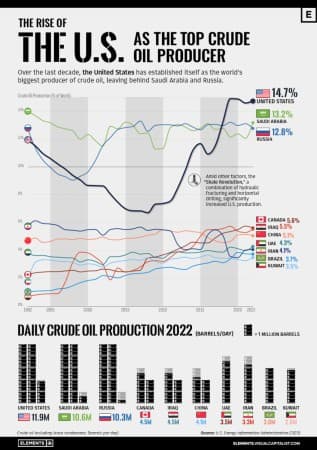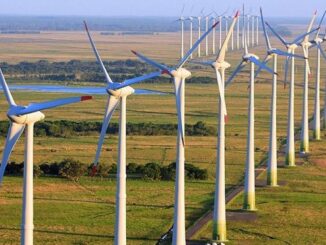
- As the largest oil producer in the world, the health of the U.S. oil industry has a major impact on global oil markets.
- Despite technological gains and increased production, challenges like economic slowdowns and equipment limitations may impede further growth.
- Tracking indicators like the Frac Spread Count and global economic conditions is crucial for understanding US oil production trends.
Despite facing significant challenges in recent years, the US remains the largest oil producer in the world and set a new annual production record in 2023. The narrative surrounding US oil production has gained significant relevance in the oil markets, especially at a time when supply and demand dynamics appear to be teetering on the edge.
In a geopolitically charged world, the increase in US production (with the IEA estimating a 1.5 mbpd increase in non-OPEC production in 2024) is instrumental in keeping oil prices in check. However, the slowdown in the global economy might impact this growth as US producers begin to reduce their activity.

How the US Became the Largest Oil Producer
Sustained high prices during the previous year, driven by Russia’s invasion of Ukraine and the reopening of the Chinese economy (which proved to be less catalytic over time), led to price spikes. Furthermore, when OPEC+ announced further cuts in April 2023 totaling 1.65 mbpd, building on the previous cut of 2 mbpd declared in October 2022, oil producers worldwide, including those in the US, were encouraged to increase production. Most importantly, technological advancements in the US, such as hydraulic fracturing and horizontal drilling, allowed producers to tap into previously untapped reserves.
Apart from technological gains and increased prices, other factors contributed to US production growth, such as not being part of OPEC and therefore not being bound by any production curtailment agreements.
Headwinds Ahead
However, given the precarious position of the global economy, the prospects for further increases in US oil production might be challenging. Production has already started to stagnate, with growth slowing to 100,000 barrels per day (bpd) between September and November and experiencing a slight plunge in October 2023. John Kemp has raised a pertinent question: given that there hasn’t been an increase in rigs and Frac Spread Count, are these efficiency gains sustainable?
Looking at the Frac Spread Count, it’s evident that equipment is limited, with around 75% of available equipment currently in use. Even with the best efficiencies deployed on the well pad, it appears to be a flat year for US production growth. Pumpers need to add more equipment over the next 2-3 years, with hopes for electric-powered equipment!
Similar observations can be found in the IEA’s latest short-term outlook, which doesn’t anticipate production rising again until at least 2025, with a slight dip projected for 2024.
“In a landscape where oil prices are favorable, operators are strategically focusing on completions to ensure maximum returns,” added Matt Johnson, CEO of PrimaryVision. This strategic shift is observable through Primary Vision Network’s Frac Spread Count, which stood at 250 in January 2023 and remains the same in 2024.
The story of US oil supply is pivotal to the global energy order in general and oil markets in particular. If global economic conditions fail to improve and a recession sets in, we might witness oil production stagnating or declining, altering the overall supply-demand dynamics with repercussions for countries worldwide. The Frac Spread Count serves as a useful indicator to track this narrative, along with the global Purchasing Manager’s Index, global trade volumes, and the interest rates of major banks.



